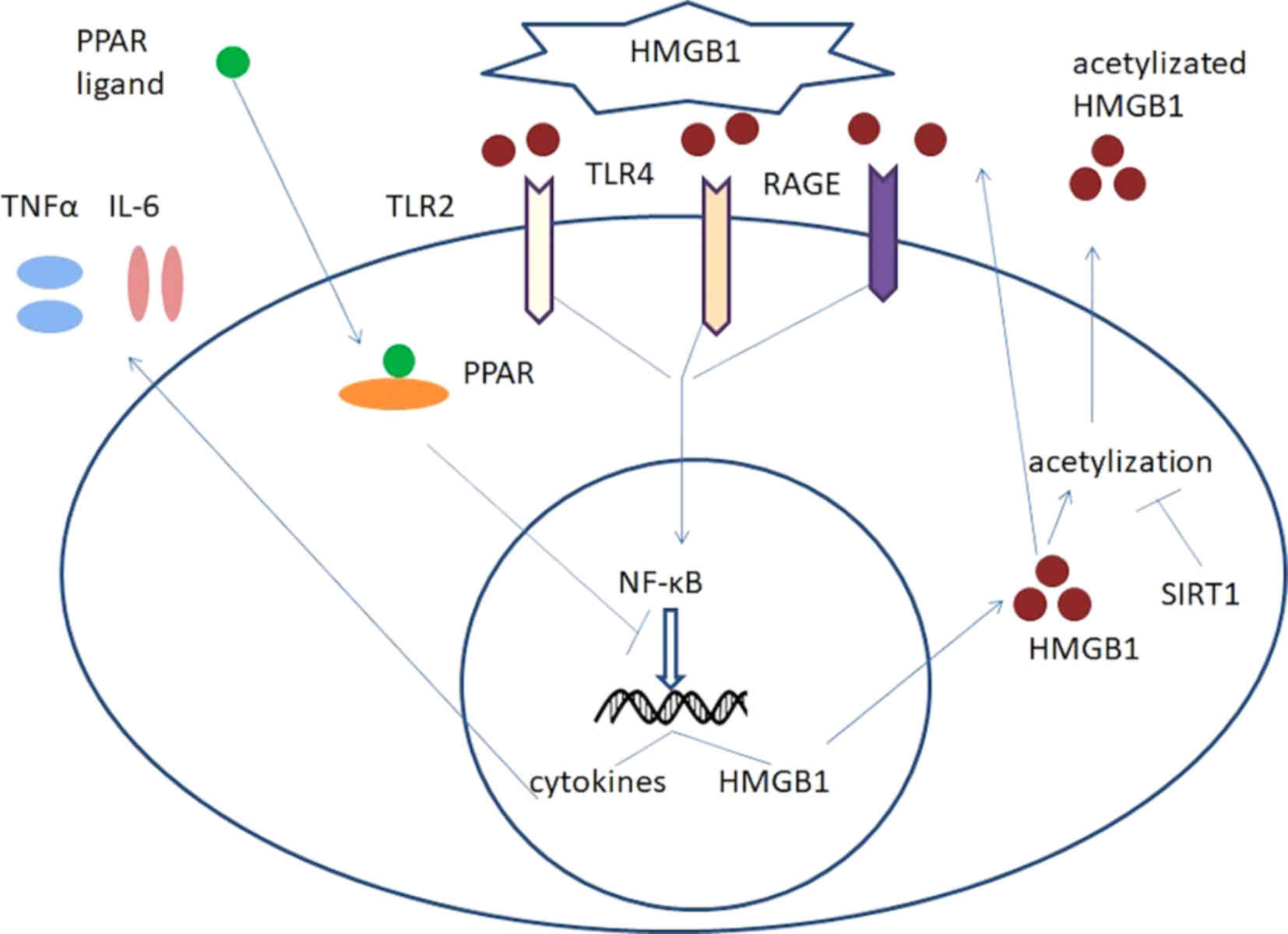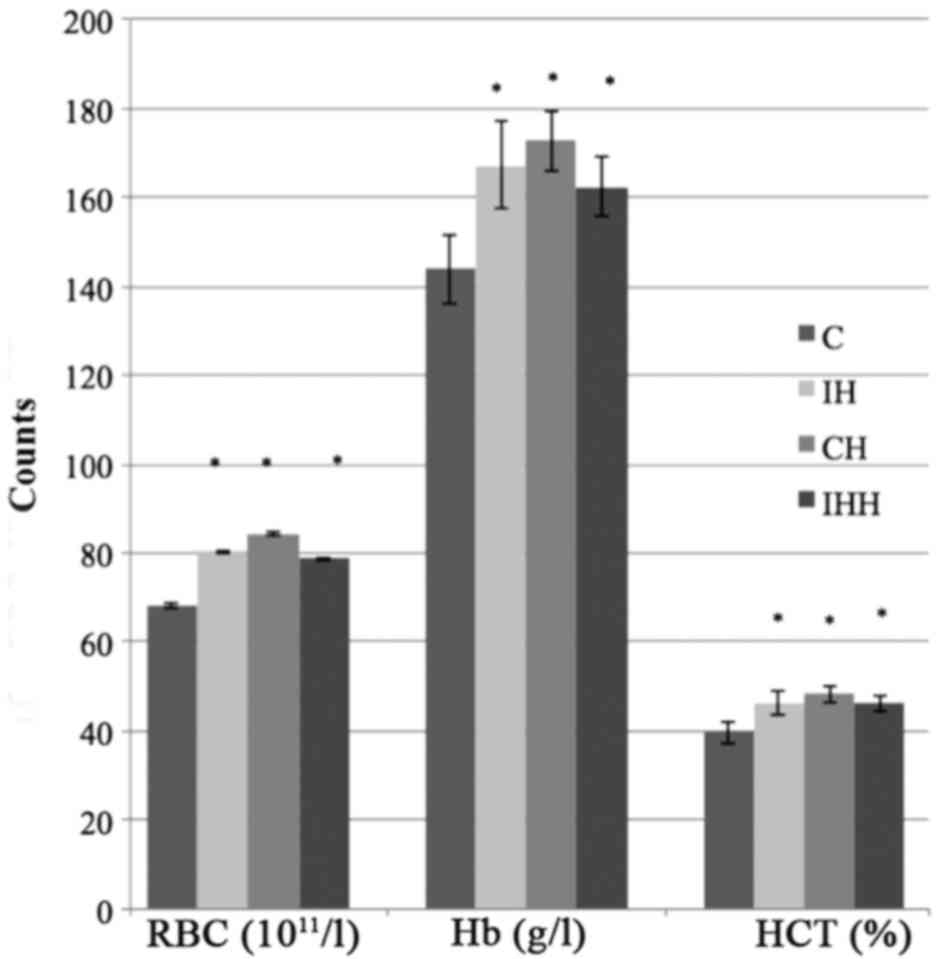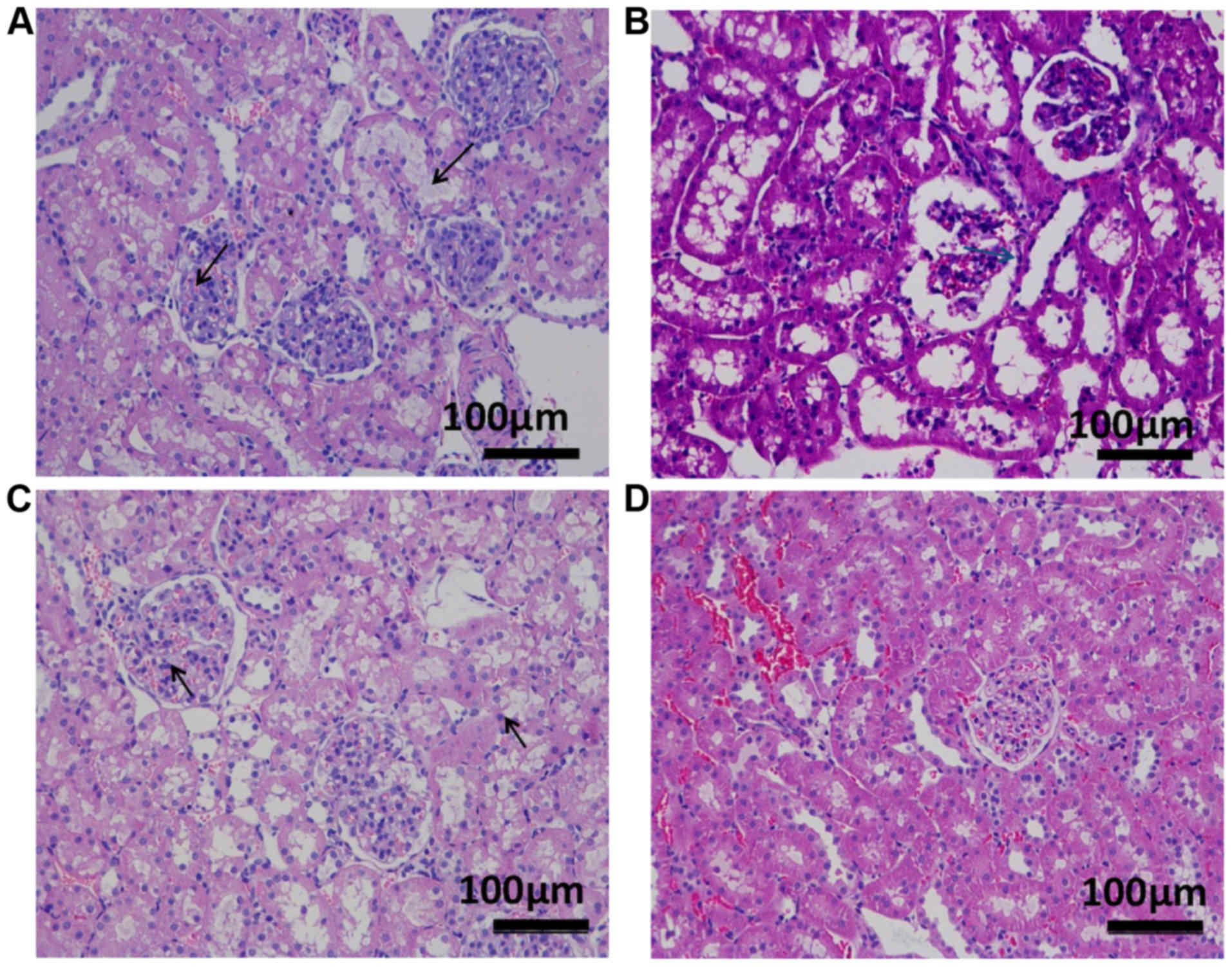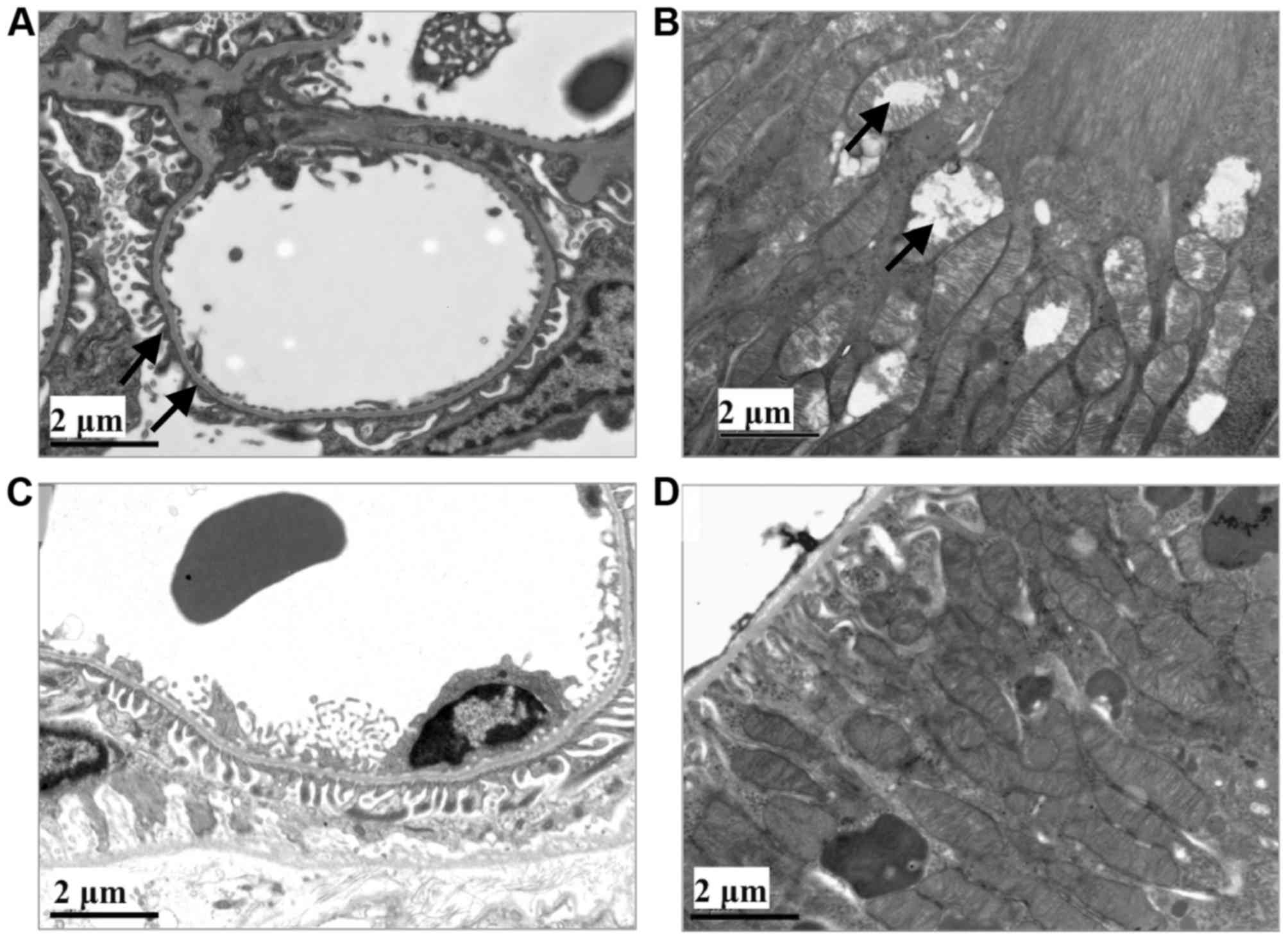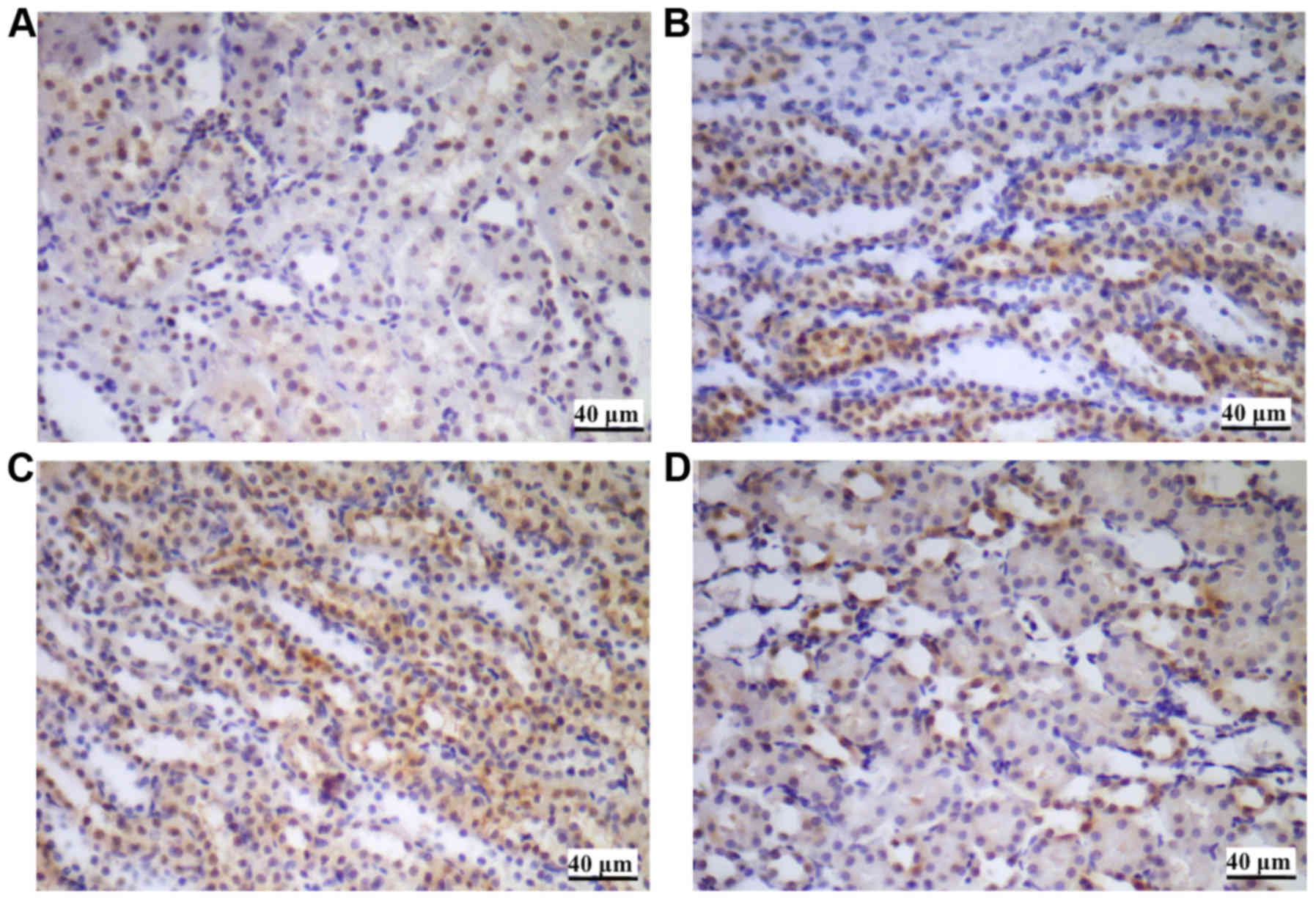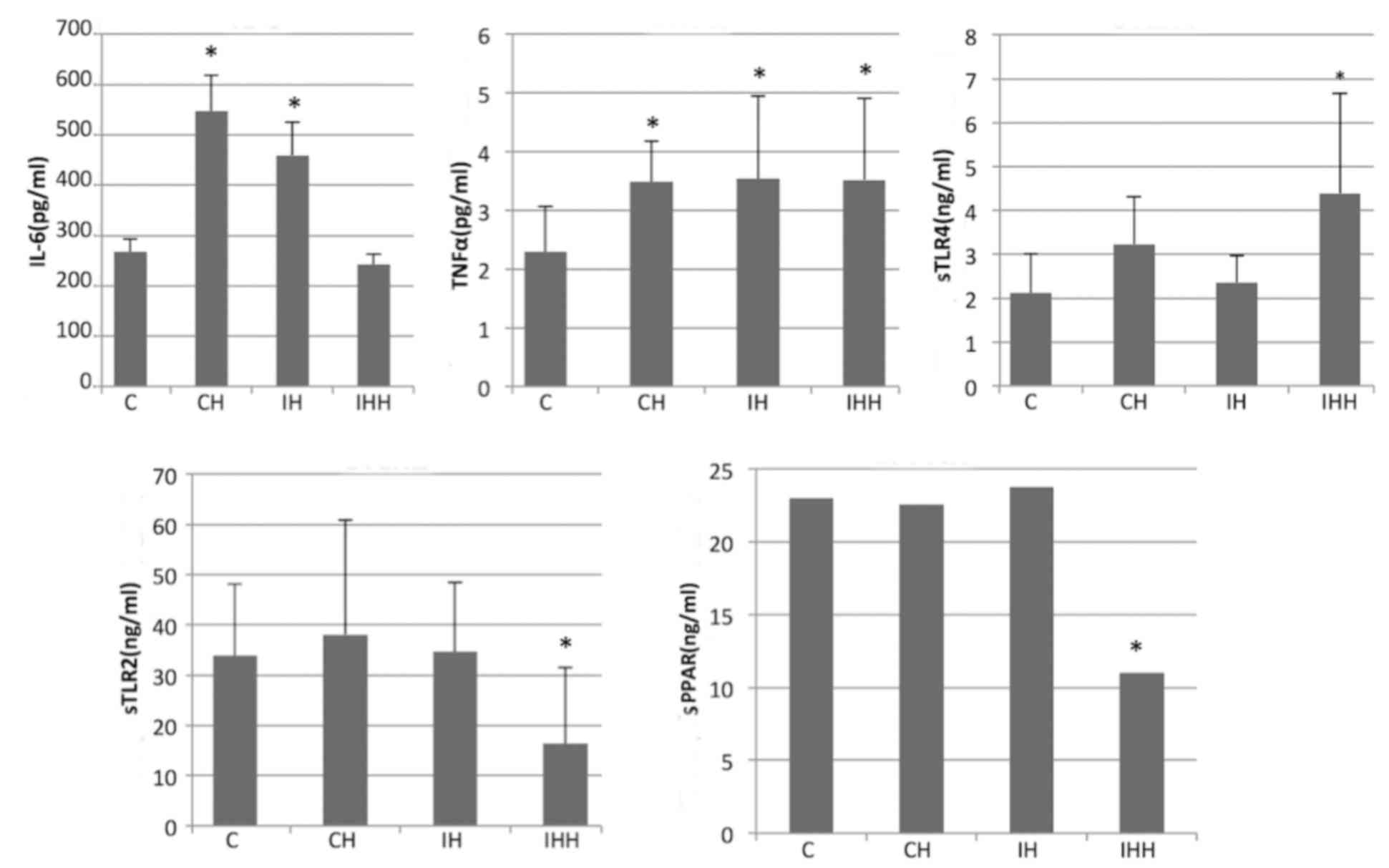|
1
|
Vijayan VK: Morbidities associated with
obstructive sleep apnea. Expert Rev Respir Med. 6:557–566. 2012.
View Article : Google Scholar : PubMed/NCBI
|
|
2
|
Wu X, Gu W, Lu H, Liu C, Yu B, Xu H, Tang
Y, Li S, Zhou J and Shao C: Soluble receptor for advanced glycation
end product ameliorates chronic intermittent hypoxia induced renal
injury, inflammation, and apoptosis via P38/JNK Signaling Pathways.
Oxid Med Cell Longev. 2016:10153902016. View Article : Google Scholar : PubMed/NCBI
|
|
3
|
Adeseun GA and Rosas SE: The impact of
obstructive sleep apnea on chronic kidney disease. Curr Hypertens
Rep. 12:378–383. 2010. View Article : Google Scholar : PubMed/NCBI
|
|
4
|
Adams RJ, Appleton SL, Vakulin A, Hanly
PJ, McDonald SP, Martin SA, Lang CJ, Taylor AW, McEvoy RD, Antic
NA, et al: Chronic kidney disease and sleep apnea association of
kidney disease with obstructive sleep apnea in a population study
of men. Sleep. 40:Jan 1–2017.doi: 10.1093/sleep/zsw015. PubMed/NCBI
|
|
5
|
Wei Q, Bian Y, Yu F, Zhang Q, Zhang G, Li
Y, Song S, Ren X and Tong J: Chronic intermittent hypoxia induces
cardiac inflammation and dysfunction in a rat obstructive sleep
apnea model. J Biomed Res. 30:490–495. 2016.PubMed/NCBI
|
|
6
|
Zhu S, Li W, Ward MF, Sama AE and Wang H:
High mobility group box 1 protein as a potential drug target for
infection- and injury-elicited inflammation. Inflamm Allergy Drug
Targets. 9:60–72. 2010. View Article : Google Scholar : PubMed/NCBI
|
|
7
|
Piccinini AM and Midwood KS: DAMPening
inflammation by modulating TLR signalling. Mediators Inflamm.
2010:pii: 672395. 2010. View Article : Google Scholar : PubMed/NCBI
|
|
8
|
Kent BD, Ryan S and McNicholas WT:
Obstructive sleep apnea and inflammation: Relationship to
cardiovascular co-morbidity. Respir Physiol Neurobiol. 178:475–481.
2011. View Article : Google Scholar : PubMed/NCBI
|
|
9
|
Andrassy M, Volz HC, Igwe JC, Funke B,
Eichberger SN, Kaya Z, Buss S, Autschbach F, Pleger ST, Lukic IK,
et al: High-mobility group box-1 in ischemia-reperfusion injury of
the heart. Circulation. 117:3216–3226. 2008. View Article : Google Scholar : PubMed/NCBI
|
|
10
|
Hori O, Brett J, Slattery T, Cao R, Zhang
J, Chen JX, Nagashima M, Lundh ER, Vijay S and Nitecki D: The
receptor for advanced glycation end products (RAGE) is a cellular
binding site for amphoterin. Mediation of neurite outgrowth and
co-expression of rage and amphoterin in the developing nervous
system. J Biol Chem. 270:25752–25761. 1995. View Article : Google Scholar : PubMed/NCBI
|
|
11
|
Tadie JM, Bae HB, Jiang S, Park DW, Bell
CP, Yang H, Pittet JF, Tracey K, Thannickal VJ, Abraham E and
Zmijewski JW: HMGB1 promotes neutrophil extracellular trap
formation through interactions with Toll-like receptor 4. Am J
Physiol Lung Cell Mol Physiol. 304:L342–L349. 2013. View Article : Google Scholar : PubMed/NCBI
|
|
12
|
Chavakis T, Bierhaus A and Nawroth PP:
RAGE (receptor for advanced glycation end products): A central
player in the inflammatory response. Microbes Infect. 6:1219–1225.
2004. View Article : Google Scholar : PubMed/NCBI
|
|
13
|
Yu SL, Wong CK, Szeto CC, Li EK, Cai Z and
Tam LS: Members of the receptor for advanced glycation end products
axis as potential therapeutic targets in patients with lupus
nephritis. Lupus. 24:675–686. 2015. View Article : Google Scholar : PubMed/NCBI
|
|
14
|
Schnare M, Barton GM, Holt AC, Takeda K,
Akira S and Medzhitov R: Toll-like receptors control activation of
adaptive immune responses. Nat Immunol. 2:947–950. 2001. View Article : Google Scholar : PubMed/NCBI
|
|
15
|
Kozako T, Aikawa A, Shoji T, Fujimoto T,
Yoshimitsu M, Shirasawa S, Tanaka H, Honda S, Shimeno H, Arima N
and Soeda S: High expression of the longevity gene product SIRT1
and apoptosis induction by sirtinol in adult T-cell leukemia cells.
Int J Cancer. 131:2044–2055. 2012. View Article : Google Scholar : PubMed/NCBI
|
|
16
|
Michan S and Sinclair D: Sirtuins in
mammals: Insights into their biological function. Biochem J.
404:1–13. 2007. View Article : Google Scholar : PubMed/NCBI
|
|
17
|
Villapol S: Roles of peroxisome
proliferator-activated receptor gamma on brain and peripheral
inflammation. Cell Mol Neurobiol. 38:121–132. 2018. View Article : Google Scholar : PubMed/NCBI
|
|
18
|
Livak KJ and Schmittgen TD: Analysis of
relative gene expression data using real-time quantitative PCR and
the 2(-Delta Delta C(T)) method. Methods. 25:402–408. 2001.
View Article : Google Scholar : PubMed/NCBI
|
|
19
|
Klune JR, Dhupar R, Cardinal J, Billiar TR
and Tsung A: HMGB1: Endogenous danger signaling. Mol Med.
14:476–484. 2008. View Article : Google Scholar : PubMed/NCBI
|
|
20
|
Ahmed SB, Ronksley PE, Hemmelgarn BR, Tsai
WH, Manns BJ, Tonelli M, Klarenbach SW, Chin R, Clement FM and
Hanly PJ: Nocturnal hypoxia and loss of kidney function. PLoS One.
6:e190292011. View Article : Google Scholar : PubMed/NCBI
|
|
21
|
Hanly PJ and Ahmed SB: Sleep apnea and the
kidney: Is sleep apnea a risk factor for chronic kidney disease?
Chest. 146:1114–1122. 2014. View Article : Google Scholar : PubMed/NCBI
|
|
22
|
Wu KM, Lin CC, Chiu CH and Liaw SF: Effect
of treatment by nasal continuous positive airway pressure on serum
high mobility group box-1 protein in obstructive sleep apnea.
Chest. 137:303–309. 2010. View Article : Google Scholar : PubMed/NCBI
|
|
23
|
Zhang JJ, Peng K, Zhang J, Meng XW and Ji
FH: Dexmedetomidine preconditioning may attenuate myocardial
ischemia/reperfusion injury by down-regulating the
HMGB1-TLR4-MyD88-NF-кB signaling pathway. PLoS One.
12:e01720062017. View Article : Google Scholar : PubMed/NCBI
|
|
24
|
Zhang J, Wu Y, Weng Z, Zhou T, Feng T and
Lin Y: Glycyrrhizin protects brain against ischemia-reperfusion
injury in mice through HMGB1-TLR4-IL-17A signaling pathway. Brain
Res. 1582:176–186. 2014. View Article : Google Scholar : PubMed/NCBI
|
|
25
|
Lee IC, Ho XY, George SE, Goh CW, Sundaram
JR, Pang KKL, Luo W, Yusoff P, Sze NSK and Shenolikar S: Oxidative
stress promotes SIRT1 recruitment to the GADD34/PP1α complex to
activate its deacetylase function. Cell Death Differ. 25:255–267.
2017. View Article : Google Scholar : PubMed/NCBI
|
|
26
|
Chen DZ, Chen LQ, Lin MX, Gong YQ, Ying BY
and Wei DZ: Esculentoside A inhibits LPS-induced acute kidney
injury by activating PPAR-γ. Microb Pathog. 110:208–213. 2017.
View Article : Google Scholar : PubMed/NCBI
|
|
27
|
Wu SH, Wang MJ, Lü J and Chen XQ: Signal
transduction involved in lipoxin A4-induced protection of tubular
epithelial cells against hypoxia/reoxygenation injury. Mol Med Rep.
15:1682–1692. 2017. View Article : Google Scholar : PubMed/NCBI
|
|
28
|
Zhu H, Li J, Wang S, Liu K, Wang L and
Huang L: Hmgb1-TLR4-IL-23-IL-17A axis promote ischemia-reperfusion
injury in a cardiac transplantation model. Transplantation.
95:1448–1454. 2013. View Article : Google Scholar : PubMed/NCBI
|
|
29
|
Wu H, Chen G, Wyburn KR, Yin J, Bertolino
P, Eris JM, Alexander SI, Sharland AF and Chadban SJ: TLR4
activation mediates kidney ischemia/reperfusion injury. J Clin
Invest. 117:2847–2859. 2007. View Article : Google Scholar : PubMed/NCBI
|
|
30
|
Dulay AT, Buhimschi CS, Zhao G, Oliver EA,
Mbele A, Jing S and Buhimschi IA: Soluble TLR2 is present in human
amniotic fluid and modulates the intraamniotic inflammatory
response to infection. J Immunol. 182:7244–7253. 2009. View Article : Google Scholar : PubMed/NCBI
|
|
31
|
Henrick BM, Yao XD, Taha AY, German JB and
Rosenthal KL: Insights into soluble Toll-Like receptor 2 as a
downregulator of virally induced inflammation. Front Immunol.
7:2912016. View Article : Google Scholar : PubMed/NCBI
|
|
32
|
Raby AC, Le Bouder E, Colmont C, Davies J,
Richards P, Coles B, George CH, Jones SA, Brennan P, Topley N and
Labéta MO: SolubleTLR2 reduces inflammation without compromising
bacterial clearance by disrupting TLR2 triggering. J Immunol.
183:506–517. 2009. View Article : Google Scholar : PubMed/NCBI
|
|
33
|
Nardelli LM, Rzezinski A, Silva JD,
Maron-Gutierrez T, Ornellas DS, Henriques I, Capelozzi VL, Teodoro
W, Morales MM, Silva PL, et al: Effects of acute hypercapnia with
and without acidosis on lung inflammation and apoptosis in
experimental acute lung injury. Respir Physiol Neurobiol. 205:1–6.
2015. View Article : Google Scholar : PubMed/NCBI
|
|
34
|
Chonghaile Ni M, Higgins BD, Costello JF
and Laffey JG: Hypercapnic acidosis attenuates severe acute
bacterial pneumonia-induced lung injury by a neutrophil-independent
mechanism. Crit Care Med. 36:3135–3144. 2008. View Article : Google Scholar : PubMed/NCBI
|
|
35
|
Takeshita K, Suzuki Y, Nishio K, Takeuchi
O, Toda K, Kudo H, Miyao N, Ishii M, Sato N, Naoki K, et al:
Hypercapnic acidosis attenuates endotoxin-induced nuclear
factor-[kappa]B activation. Am J Respir Cell Mol Biol. 29:124–132.
2003. View Article : Google Scholar : PubMed/NCBI
|















